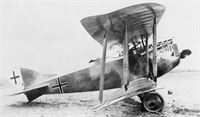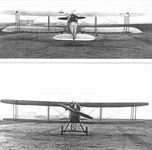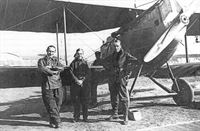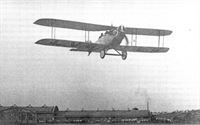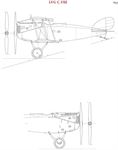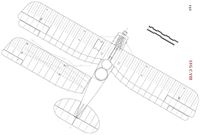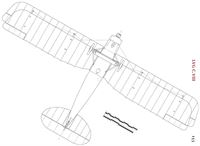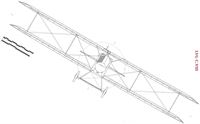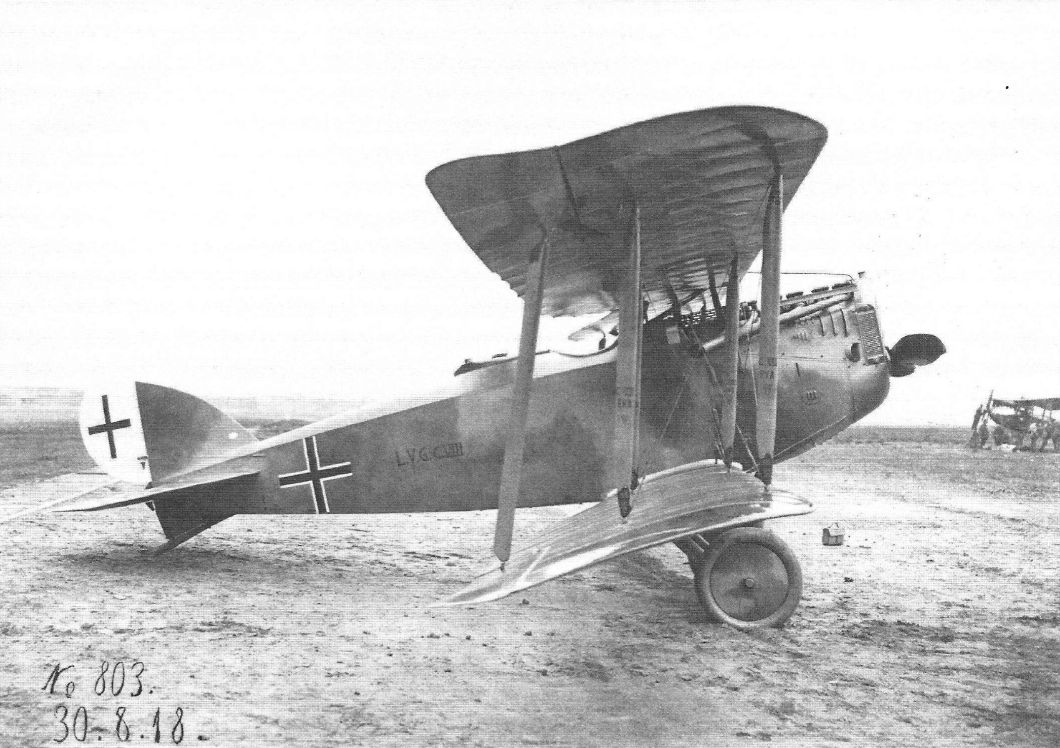
Описание
Страна: Германия
Год: 1918
Варианты
- LVG - C.V - 1917 - Германия
- LVG - C.VI - 1918 - Германия
- LVG - C.VIII - 1918 - Германия
- LVG - P.I / P.II - 1919 - Германия
- LVG - W.I / W.II - 1919 - Германия
- O.Thetford, P.Gray German Aircraft of the First World War (Putnam)
- J.Herris LVG Aircraft of WWI. Vol.1: B-Types & C.I (A Centennial Perspective on Great War Airplanes 34)
- J.Herris LVG Aircraft of WWI. Vol.3: Types C.VI-C.XI & Fighters (A Centennial Perspective on Great War Airplanes 36)
- M.Dusing German Aviation Industry in WWI. Volume 1 (A Centennial Perspective on Great War Airplanes 84)
-
J.Herris - LVG Aircraft of WWI. Volume 3: Types C.VI-C.XI & Fighters /Centennial Perspective/ (36)
The LVG C.VIII prototype photographed at Johannisthal on 30 August 1918. This handsome two-seater was powered by a 240 hp Benz Bz.IVu high altitude engine. (Peter M. Grosz Collection/SDTB)
-
J.Herris - Development of German Warplanes in WWI /Centennial Perspective/ (1)
The handsome LVG C.VIII with frontal radiator was the next development of the LVG C-types. Powered by the 230 hp Benz Bz.IVa, it was too late to arrive at the front before the armistice.
The LVG C.VIII was designed for the high-compression 200hp Benz I (to give 240hp) for altitude performance. In the event, however, the prototype was a one-off as production effort was concentrated on more promising types. -
J.Herris - LVG Aircraft of WWI. Volume 3: Types C.VI-C.XI & Fighters /Centennial Perspective/ (36)
The LVG C.VIII prototype photographed at Johannisthal; the bottom photo was taken on 30 August 1918 and it is likely the others were also. The nose radiator is the most distinctive feature that differentiates the C.VIII from its C.VI predecessor, followed by the ailerons on all wings connected by actuating struts. The 240 hp Benz Bz.IVu high altitude engine was a development of the 220 hp Benz Bz.IVa used in the LVG C.VI. (Peter M. Grosz Collection/SDTB)
-
J.Herris - LVG Aircraft of WWI. Volume 3: Types C.VI-C.XI & Fighters /Centennial Perspective/ (36)
The LVG C.VIII prototype photographed at Johannisthal. (Peter M. Grosz Collection/SDTB)
-
J.Herris - LVG Aircraft of WWI. Volume 3: Types C.VI-C.XI & Fighters /Centennial Perspective/ (36)
LVG C.VIII prototype with Benz Bz.IV, front radiator, Anker propeller.
The LVG C.VIII prototype photographed at Johannisthal with some members of the test and development team. (Peter M. Grosz Collection/SDTB) -
J.Herris - LVG Aircraft of WWI. Volume 3: Types C.VI-C.XI & Fighters /Centennial Perspective/ (36)
The LVG C.VIII prototype photographed at Johannisthal post-war as indicated by the large "L.V.G." painted underneath each lower wing.
The C.VIII was the ultimate two-seater design by LVG. Developed from the successful C.VI, the C.VIII used an over-compressed engine for better performance at high altitude, a nose radiator, and ailerons on all wings for improved maneuverability.
O.Thetford, P.Gray German Aircraft of the First World War (Putnam)
L.V.G. C VIII
Final two-seater to emerge from the L.V.G. factory during the First World War was the C VIII of 1918. Although not vastly different from the C VI, there were larger and shallower cut-outs in the wings and ailerons with a link strut fitted at all four wingtips. The high-compression 200 h.p. Benz IV u. engine developed some 240 h.p. at rated altitude and was fitted with a large car-type radiator on the extreme nose. Only one aircraft was completed. Engine, 200 h.p. Benz Bz IV u. Span, 13.0 m. (42 ft. 7 7/8 in.). Length, 7.0 m. (22 ft. 11 5/8 in.). Height, 2.8 m. (9 ft. 2 1/4 in.). Area, 35.7 sq.m. (386 sq.ft.). Weights: Empty, 975 kg. (2,145 lb.). Loaded, 1,380 kg. (3,036 lb.). Speed, 165km.hr.(103.125 m.p.h.). Duration,4hr. Armament, one Spandau and one Parabellum machine-guns.
Описание:


